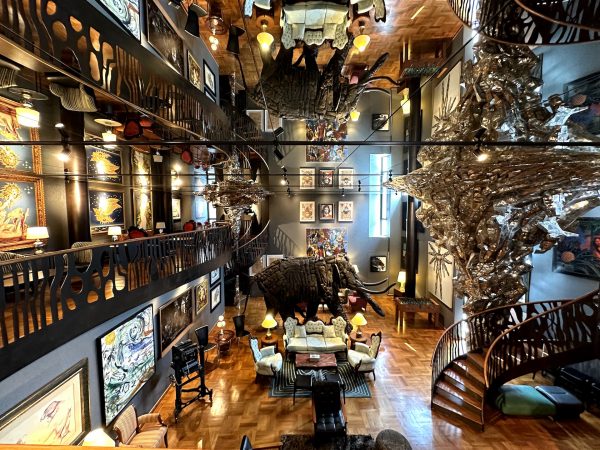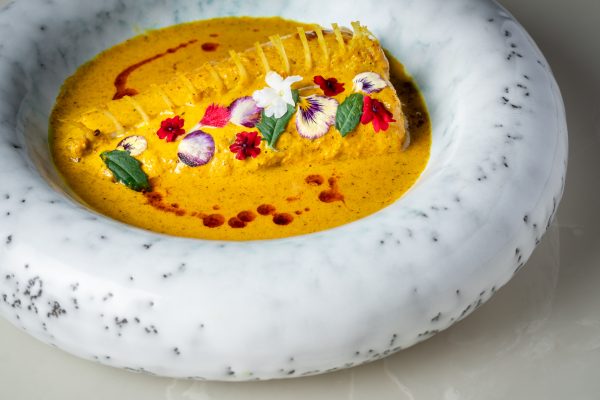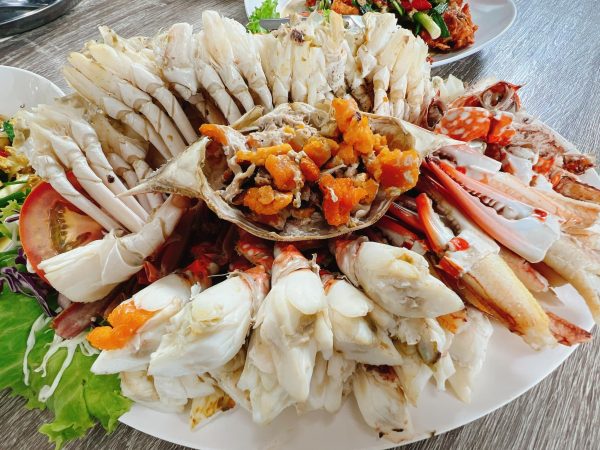Rituals of Colour and Joy

The northern province of Mae Hong Son comes alive with vibrant colours and rich traditions during the Poy Sang Long Festival, creating a mesmerizing spectacle from March to April.
The festival, a celebration of novice ordination among the Tai Yai, descendants of the Shan people, transforms the province into a tapestry of faith and cultural richness, captivating both locals and visitors alike.
This year, from March to April, the temples in Mae Hong Son will again witness the grandeur of this traditional ritual and play host to a cultural phenomenon.
“Poy Sang Long” captures the essence of this special tradition. “Poy” signifies rhythmic and joyful ceremonies, “Sang” represents the novices, and “Long” evokes the disciples of Lord Buddha.
In English, “Poy Sang Long” translates into a simple yet profound ritual – the ordination of novices in the Tai Yai tradition.
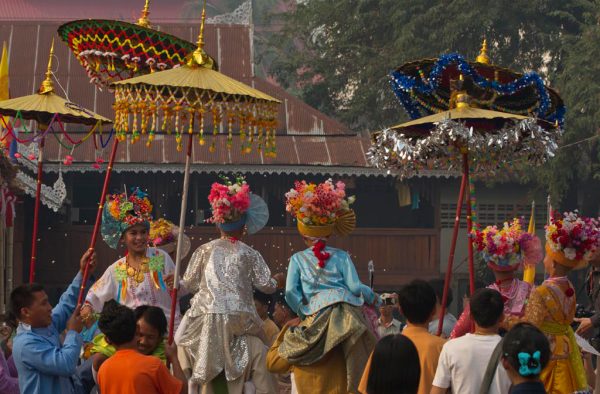
The celebration goes beyond religious observance, evolving into a cultural extravaganza that portrays the devotion of the Tai community to Buddhism.
At the heart of this tradition is the Sang Long Parade, or Krua Lu, a grand procession that captures the beauty of Tai customs, transforming small towns nestled in deep mountain valleys into living canvases of spirituality.
Over three to five enchanting days, the ordination ceremony unfolds with meticulous preparations, drawing a substantial number of participants. Each day is a chapter in the story, revealing specific rituals and joyous celebrations that create a rich, immersive experience for all involved.
The journey begins with the Reception Day, where families joyfully escort the boys to the temples. Here, a transformation awaits.

The young boys are adorned in exquisite Sang Long attire – a symphony of vibrant colours and cultural richness. Their sarongs, with a long back flap and grasping a flower petal, are elegantly secured with a decorative bronze or silver belt.
The collarless, long-sleeved shirts are adorned with intricate embroidered flower patterns in an array of hues.
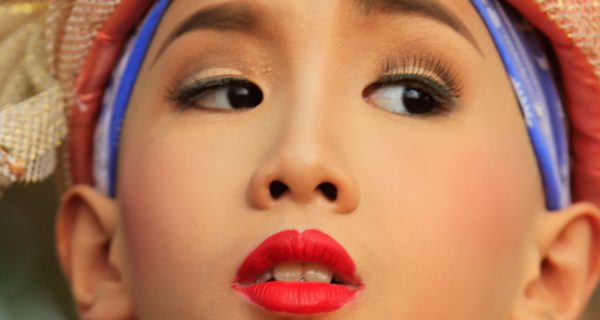
“The Tai people believe that Sang Long embodies a beautiful and angelic presence. As a result, we strive to embellish Sang Long by selecting elegant outfits and adorning them with headgear, enhancing their natural beauty,” says Tai elder, Sopin Kaenthan.
A majestic cloth headpiece, embellished with delicate orchids and blossoms, graces their heads. With their faces painted with artful arches for eyebrows and lips tinted red, the novices are a vision of cultural elegance.
White socks complete their attire, and this meticulous dressing ritual signifies the embrace of the full traditional Sang Long novice ensemble.
“Traditionally, Tai women wear their hair long. After cutting it, some women clean and carefully wrap a handful of their hair.
During the Poi Sang Long ceremony, these women roll their well-kept hair into a bundle to adorn the Sang Long headgear. Since women cannot become monks or novices, this symbolic act is believed to bestow upon them blessings akin to the merit gained through living in the monkhood,” adds Sopin.
As the novices stand adorned, a profound moment unfolds as monks bestow blessings and share teachings, laying the foundation for a sacred journey ahead.
After the conclusion of the Reception Day, the Ta Pae Sang Long, or the novice carriers, gracefully descend from the temple with Sang Long on their shoulders to perform a ceremonial dance in front of the temple grounds.
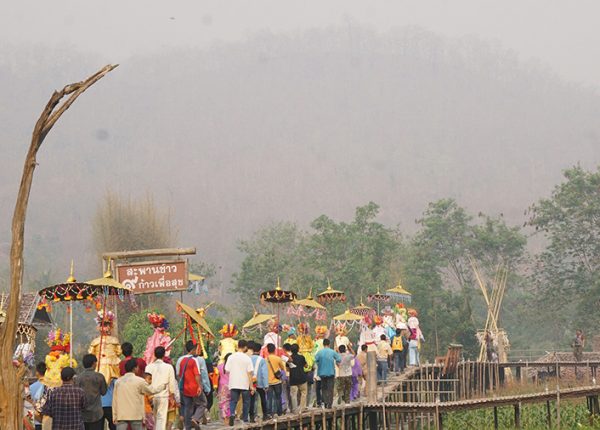
This festive celebration serves as a joyous welcome for the novices. Parents and relatives of the novices join in, scattering popped rice and flower petals as a symbolic expression of gratitude and merit-making.
On Kham Khaek Day, or Receiving Guests Day, the second chapter opens with the Khao Lu Ceremony and an elaborate feast in honour of Sang Long.
Hosts meticulously prepare abundant rice and various dishes for the visitors, who, in turn, tie a white cotton thread around Sang Long’s wrist to impart blessings.
The entire village partakes in the festivities, donning opulent Tai garments, and celebrating Sang Long’s ordination with lively feasts, music, and joyous merriment.
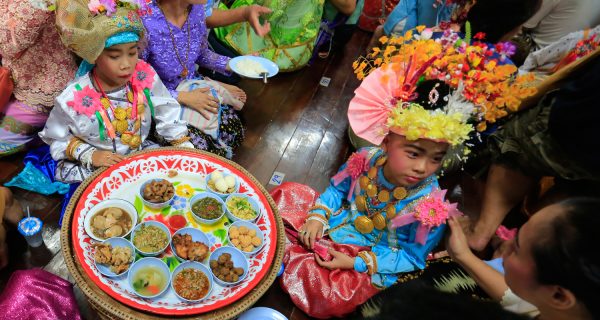
The Krua Lu Parade Day, on the third day, becomes a visual feast with a procession through various streets, showcasing Tai traditional items.
Devotees join, carrying and transporting ritual items. Each Sang Long, riding on the neck of the Ta Pae Sang Long, is shaded by a golden parasol. In the evening, a traditional Thai dance performance follows Tai Yai tradition, casting a spell over the onlookers.
On Kham Sang Day or Lu Day, the fourth day, the family brings the Sang Long for ordination. Accompanied by the monk Jang Long, the Yab Jang or ordination begins early in the morning.
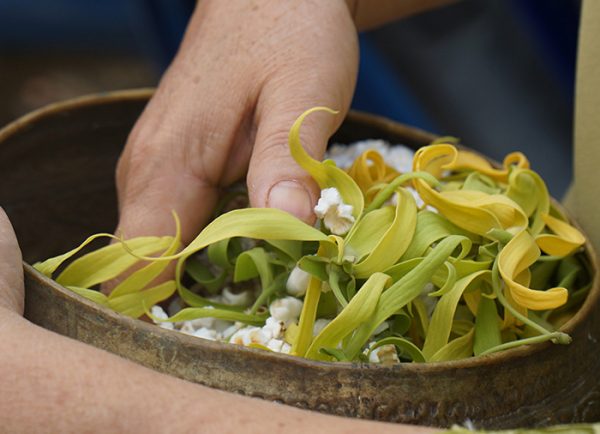
The Ta Pae Jang Long leads the procession to the temple, accompanied by Jee Jeh\ (umbrella carriers) and traditional music. If there is no ordination at the temple, a water ordination takes place, with a special ordination space set up in a pond.
The Poy Sang Long Festival is a captivating journey into the heart of Shan culture, blending spirituality, tradition, and community against the backdrop of breathtaking landscapes.
It honors the rich cultural heritage of the Shan people and invites the world to join in the celebration of a time-honored tradition.
In today’s digital age, where virtual interactions take precedence, the Poy Sang Long Festival stands strong, showcasing cultural resilience and inviting visitors to experience the beauty of Shan traditions.
PLANNING YOUR TRIP
Mae Hong Son, in northwestern Thailand, can be easily reached options from Bangkok. Bangkok Airways has direct flights, offering a quick and convenient journey. Alternatively, a public bus, though lengthy at around 17 hours, is a budget-friendly option.
During the Poy Sang Long Festival, celebrated from March to April, vibrant events are held at different locations:
Mueang Mae Hong Son District:
– Wat Phra That Doi Kongmu (March 10-13)
– Wat Huay Pha (March 22-24)
– Wat Klang Thung (April 5-7)
– Wat Hui Makhue Som (April 11-14)
Pang Mapha District:
– Wat Tham Rod (April 1-4)
– Wat Pung Yam (April 19-22)
– Wat Pang Kham (March 22-25)
Mae Sariang District:
– Wat Si Bunrueang (March 29-April 1)
By Thai PBS World Feature Desk



